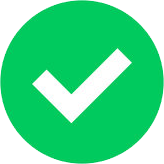How to Build a Web Application – 12 Simple Steps to Success
Building a web application is an exciting journey that allows you to bring your ideas to life and reach a global audience. Whether you’re a seasoned developer or a beginner, this comprehensive guide will walk you through the essential steps to create a web application successfully. We’ll cover everything from planning and designing to coding and deployment. So, before diving into developing a web application, let us understand the basics.
What is a Web Application?
Web applications are software programs that are delivered over the World Wide Web. A web application is made up of web pages written in languages such as JavaScript, PHP, and ASP.NET, with server-side code that manipulates data and services on the user’s behalf. They are built with data logic in mind. The application first needs to grab the data from a database or some other resource before it can determine what needs to be displayed and how it should look. This allows for more effective content delivery. It’s important to remember that web applications are not websites but web-based applications, offering interactive and dynamic features. Moreover, when discussing web development, it’s essential to consider the top web development programming languages in this field.
Is web application development easy?
Web application development has become a prominent field in the technology industry, offering exciting opportunities for innovation and entrepreneurship. However, many aspiring developers and business owners wonder: Is web application development easy?
The ease of web application development can vary widely depending on several factors:
- Varies with Experience: Web app development’s ease depends on your familiarity with web technologies. Experienced developers may find it easier, while beginners might face a steeper learning curve.
- Project Complexity Matters: Simple projects are easier, while complex apps with intricate features can be challenging.
- Use of Frameworks: Utilizing web development frameworks can simplify tasks, reducing coding effort.
- Resource Availability: Access to resources and community support impacts ease of development.
- Team Collaboration: Collaboration can streamline development through knowledge sharing and task distribution.
- Testing and Debugging: Proper testing and debugging practices can make development more manageable.
- Security Adds Complexity: Implementing robust security measures may require extra effort but is crucial for success.
How to create a web app: 12 simple steps
Define Your Idea and Objectives
Before you start building a web application, it’s crucial to define your idea and objectives clearly. Ask yourself questions like: What problem will your app solve? Who is your target audience? What are your goals? This initial planning phase is the foundation of your project.
Market Research and Validation
Conduct thorough market research to better understand your competition and target market. Validate your idea by talking to potential users, gathering feedback, and identifying pain points that your web app can address. This step helps you refine your concept and ensures there’s demand for your application.
Create a Detailed Project Plan
A well-structured project plan outlines the scope, timeline, and resources required for your web application. Define features, prioritize tasks, and estimate development and testing phases. Having a roadmap will keep your project on track and help manage expectations.
Choose the Right Technology Stack
Selecting the appropriate technology stack is critical for your web application’s success. Consider factors like scalability, performance, and your team’s expertise. Common components include choosing a programming language, framework, database, and hosting platform.
Design the User Experience (UX)
Create wireframes and prototypes to design the user interface (UI) and user experience (UX) of your web app. Focus on user-friendly navigation, responsive design, and a visually appealing interface. Keep user feedback in mind during this phase.
Frontend Development
Start developing the frontend of your web application using HTML, CSS, and JavaScript. Utilize frontend frameworks like React, Angular, or Vue.js to streamline development. Ensure your web app is responsive for various devices and browsers.
Backend Development
Build the backend logic and server-side components of your web application. Choose a backend framework, like Django, Ruby on Rails, or Node.js, to handle data processing, authentication, and server-side operations. Secure your application with proper authentication and authorization mechanisms.
Database Design and Integration
Design an efficient database schema and integrate it into your backend. Choose a database system that suits your needs, whether it’s SQL (e.g., PostgreSQL, MySQL) or NoSQL (e.g., MongoDB, Cassandra). Optimize database queries for speed and reliability.
Testing and Quality Assurance
Thoroughly test your web application to identify and fix bugs, security vulnerabilities, and performance issues. Implement automated testing and continuous integration tools to streamline this process. User acceptance testing (UAT) is essential to ensure your app meets user expectations.
Deployment and Hosting
Choose a hosting provider and deploy your web application. Popular options include AWS, Azure, Heroku, or VPS providers. Configure your server, set up SSL certificates for security, and optimize server settings for performance.
Monitor, Scale, and Maintain
After launching your web app, monitor its performance, user engagement, and security regularly. Use tools like Google Analytics, New Relic, or Datadog to track metrics. As your user base grows, be prepared to scale your infrastructure accordingly. Keep your application updated with regular maintenance and feature enhancements.
Marketing and User Acquisition
Promote your web application through various marketing channels, such as social media, content marketing, and paid advertising. Engage with your user community, gather feedback, and implement improvements based on user suggestions.
Conclusion
Building a web application is a complex but rewarding endeavor. By following this comprehensive guide, you’ll have a solid roadmap to transform your idea into a successful web application. Remember that continuous learning and adaptation are key to staying competitive in the ever-evolving world of web development. Embrace user feedback and stay updated with the latest technologies to ensure your web app remains relevant and valuable to your audience. Good luck with your web application journey!
If you need assistance with which web application would be most appropriate for your business or need experts to help you get started with complete stack design and development, connect with our experts at Zaigo Infotech. Being a renowned web application development company, our team will analyze your business requirements and provide you with the best framework to stay ahead in the market.
FAQ
[sp_easyaccordion id=”6485″]








